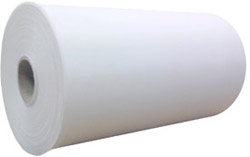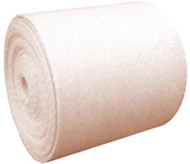¡@
Blasting glass beads are used for pre-treatment, electroplating
preparation, finishing, cleaning, and rust removal on molds, machine
parts, tools, and more. ¡@ |
|||||||||||||||||||||||||||||||||||||||||||||||||||||||||||||||||||||||||||||||||||||||||||||||||||||||||||||||||||||||
|
|
¡@ |
||||||||||||||||||||||||||||||||||||||||||||||||||||||||||||||||||||||||||||||||||||||||||||||||||||||||||||||||||||||
|
¡@ ¡@ | |||||||||||||||||||||||||||||||||||||||||||||||||||||||||||||||||||||||||||||||||||||||||||||||||||||||||||||||||||||||
|
¡@ | |||||||||||||||||||||||||||||||||||||||||||||||||||||||||||||||||||||||||||||||||||||||||||||||||||||||||||||||||||||||
|
Natural rubber (NR) .. (Hevea, rubber, natural cis-polyisoprene) A general purpose rubber with the optimum balance of physical properties essential for high performance engineering applications. Long fatigue life, first choice for spring applications. Has high strength without the need for reinforcing fillers. Can be compounded to give a wide range of hardness. Good low temperature flexibility Poor resistance to oils and solvents. Requires protection against oxidisation, ozone and heat. It can be extended by oil with little loss of mechanical properties. | |||||||||||||||||||||||||||||||||||||||||||||||||||||||||||||||||||||||||||||||||||||||||||||||||||||||||||||||||||||||
| ¡@ | |||||||||||||||||||||||||||||||||||||||||||||||||||||||||||||||||||||||||||||||||||||||||||||||||||||||||||||||||||||||
|
Isoprene rubber (IR) .. (synthetic cis-polyisoprene) Very similar properties to natural rubber but more difficult to process. | |||||||||||||||||||||||||||||||||||||||||||||||||||||||||||||||||||||||||||||||||||||||||||||||||||||||||||||||||||||||
|
¡@ | |||||||||||||||||||||||||||||||||||||||||||||||||||||||||||||||||||||||||||||||||||||||||||||||||||||||||||||||||||||||
|
Styrene butadiene rubber (SBR) The most important general purpose synthetic rubber. It must be compounded with reinforcing fillers for high strength and then has physical and chemical properties similar to natural rubber, except that generally abrasion resistance is better and fatigue resistance is pooer. It is not suitable for springs but has used widely for vehicle tyres where it is generally oil extended. | |||||||||||||||||||||||||||||||||||||||||||||||||||||||||||||||||||||||||||||||||||||||||||||||||||||||||||||||||||||||
| ¡@ | |||||||||||||||||||||||||||||||||||||||||||||||||||||||||||||||||||||||||||||||||||||||||||||||||||||||||||||||||||||||
|
Butadiene rubber (BR) Low hysteresis, good temperature flexibility and high abrasion resistance under severe weather conditions. Poor processing properties and poor tear properties. Used in blends with SBR and natural rubber. Main use in in manufacture of tyres. | |||||||||||||||||||||||||||||||||||||||||||||||||||||||||||||||||||||||||||||||||||||||||||||||||||||||||||||||||||||||
| ¡@ | |||||||||||||||||||||||||||||||||||||||||||||||||||||||||||||||||||||||||||||||||||||||||||||||||||||||||||||||||||||||
|
Chloroprene rubber (CR) .. Neoprene .. Several types of polychloroprene. Mechanical properties generally inferior to natural rubber but superior chemical properties. Over time crystallisation results in hardening at temperatures about -10 deg. C. Very good resistance to ozone. | |||||||||||||||||||||||||||||||||||||||||||||||||||||||||||||||||||||||||||||||||||||||||||||||||||||||||||||||||||||||
| ¡@ | |||||||||||||||||||||||||||||||||||||||||||||||||||||||||||||||||||||||||||||||||||||||||||||||||||||||||||||||||||||||
|
Nitrile rubber (NBR) .. (Acrylonitrile butediene copolymer) Nitrile rubbers are copolymers of butadiene and acrylonitrile. The oil resistance increases as the acrylonitrile content but at the expense of resilience. Used for O rings and oil seals. | |||||||||||||||||||||||||||||||||||||||||||||||||||||||||||||||||||||||||||||||||||||||||||||||||||||||||||||||||||||||
| ¡@ | |||||||||||||||||||||||||||||||||||||||||||||||||||||||||||||||||||||||||||||||||||||||||||||||||||||||||||||||||||||||
|
EPM rubber (EPM) .. (ethylene propylene copolymer)+ EPDM rubber (EPDM) ..(ethylene propylene terpolymer) Similar to SBR but improved resistance to atmostpheric ageing, oxidisation, and ozone. Not compatable with elastomers listed above. | |||||||||||||||||||||||||||||||||||||||||||||||||||||||||||||||||||||||||||||||||||||||||||||||||||||||||||||||||||||||
| ¡@ | |||||||||||||||||||||||||||||||||||||||||||||||||||||||||||||||||||||||||||||||||||||||||||||||||||||||||||||||||||||||
|
Chlorosulphonyl polytethylene (CSM) ..(Hypolon) Excellent resistance to oxygen, ozone, and most chemicals. Low gas permeability. Used for protective coatings. | |||||||||||||||||||||||||||||||||||||||||||||||||||||||||||||||||||||||||||||||||||||||||||||||||||||||||||||||||||||||
| ¡@ | |||||||||||||||||||||||||||||||||||||||||||||||||||||||||||||||||||||||||||||||||||||||||||||||||||||||||||||||||||||||
|
Acrylic Rubber (ACM) (Alkyl acrylate coplolymer). Good resistance at normal and elevated temperatures to oil and oxygen. Excellent ozone and and weathering resistance. Poor moist heat resistance. | |||||||||||||||||||||||||||||||||||||||||||||||||||||||||||||||||||||||||||||||||||||||||||||||||||||||||||||||||||||||
| ¡@ | |||||||||||||||||||||||||||||||||||||||||||||||||||||||||||||||||||||||||||||||||||||||||||||||||||||||||||||||||||||||
|
Silicone rubber (SI) Moderate physical properties but are retained at high or low temperatures. Good electrical properties. | |||||||||||||||||||||||||||||||||||||||||||||||||||||||||||||||||||||||||||||||||||||||||||||||||||||||||||||||||||||||
| ¡@ | |||||||||||||||||||||||||||||||||||||||||||||||||||||||||||||||||||||||||||||||||||||||||||||||||||||||||||||||||||||||
|
Fluoro rubbers (FKM) .. (Fluorel, Kel-F, viton) Excellent resistance to strong oxidising acids, aromatic fuels and solvents at high temperatures, and to oxidation weathering and ozone. | |||||||||||||||||||||||||||||||||||||||||||||||||||||||||||||||||||||||||||||||||||||||||||||||||||||||||||||||||||||||
| ¡@ | |||||||||||||||||||||||||||||||||||||||||||||||||||||||||||||||||||||||||||||||||||||||||||||||||||||||||||||||||||||||
|
Butyl rubber (BUTYl) .. (isombutylene-isoprene copolymer) Good ozone, weathering, heat and chemical resistance. It has a very high impermeability to gases. Low resilience at ambient temperatures and is suitable for damping applications. Incompatible with elastomers listed above. Can be compounded with chlorine to give improved ozone, weathering resistance and high temperature stability. Used for inner tubes. | |||||||||||||||||||||||||||||||||||||||||||||||||||||||||||||||||||||||||||||||||||||||||||||||||||||||||||||||||||||||
| ¡@ | |||||||||||||||||||||||||||||||||||||||||||||||||||||||||||||||||||||||||||||||||||||||||||||||||||||||||||||||||||||||
|
Polysulphide rubber (TR) .. Thiokol (condensates of sodium polysulphides with organic dihalides.) Excellent high resistance to oils, fuels , solvents, oxygen and also low gas permeability. Poor physica,heat, and wear properties. | |||||||||||||||||||||||||||||||||||||||||||||||||||||||||||||||||||||||||||||||||||||||||||||||||||||||||||||||||||||||
| ¡@ | |||||||||||||||||||||||||||||||||||||||||||||||||||||||||||||||||||||||||||||||||||||||||||||||||||||||||||||||||||||||
|
Polyurethane rubber .. (AU - Polyester type...EU- polyether type) Good abrasion, tensile and tear strength, good resistance to aliphatic solvents and mineral oils, oxygen and ozone. Moderate resistance to dry heat. Poor resistance to moist heat. | |||||||||||||||||||||||||||||||||||||||||||||||||||||||||||||||||||||||||||||||||||||||||||||||||||||||||||||||||||||||
| ¡@ | |||||||||||||||||||||||||||||||||||||||||||||||||||||||||||||||||||||||||||||||||||||||||||||||||||||||||||||||||||||||
|
Epichlorohydrin (CO) High resistance to ageing oxidatio, ozone and hot oil. Good resistance to hydrocarbon solvents combined with moderate low temperature flexibility, poor abrasion resistance and electrical properties. | |||||||||||||||||||||||||||||||||||||||||||||||||||||||||||||||||||||||||||||||||||||||||||||||||||||||||||||||||||||||
| ¡@ | |||||||||||||||||||||||||||||||||||||||||||||||||||||||||||||||||||||||||||||||||||||||||||||||||||||||||||||||||||||||
|
Polypropylene oxide rubber (PO) .. (a copolymer with about 5% allyl glycol ether) Similar to SBR in requiring reinforcing fillers for adequate strength. Good resistance to ozone, flexing and heat ageing. Good low temperature flexibility; moderate oil resistance. properties. | |||||||||||||||||||||||||||||||||||||||||||||||||||||||||||||||||||||||||||||||||||||||||||||||||||||||||||||||||||||||
| ¡@ | |||||||||||||||||||||||||||||||||||||||||||||||||||||||||||||||||||||||||||||||||||||||||||||||||||||||||||||||||||||||
|
| |||||||||||||||||||||||||||||||||||||||||||||||||||||||||||||||||||||||||||||||||||||||||||||||||||||||||||||||||||||||
|
| |||||||||||||||||||||||||||||||||||||||||||||||||||||||||||||||||||||||||||||||||||||||||||||||||||||||||||||||||||||||
| |||||||||||||||||||||||||||||||||||||||||||||||||||||||||||||||||||||||||||||||||||||||||||||||||||||||||||||||||||||||






